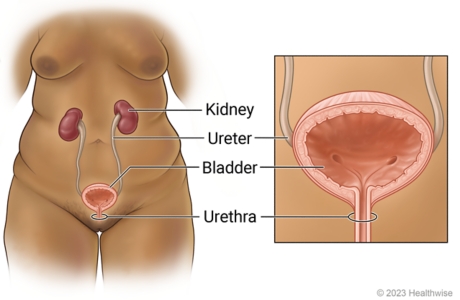Our Health Library information does not replace the advice of a doctor. Please be advised that this information is made available to assist our patients to learn more about their health. Our providers may not see and/or treat all topics found herein.
Bladder

The bladder is a balloon-shaped muscle that stores urine. It is part of the urinary tract, along with the kidneys, ureters, and the urethra.
The kidneys filter waste products and water from the blood to form urine. The urine moves from the kidneys through tubes called ureters to the bladder, where the urine is stored. From the bladder, urine leaves the body through another thin tube, the urethra.
Current as of: April 9, 2025
Author: Ignite Healthwise, LLC Staff
Clinical Review Board
All Ignite Healthwise, LLC education is reviewed by a team that includes physicians, nurses, advanced practitioners, registered dieticians, and other healthcare professionals.
This information does not replace the advice of a doctor. Ignite Healthwise, LLC disclaims any warranty or liability for your use of this information. Your use of this information means that you agree to the Terms of Use and Privacy Policy. Learn how we develop our content.
To learn more about Ignite Healthwise, LLC, visit webmdignite.com.
© 2024-2025 Ignite Healthwise, LLC.


